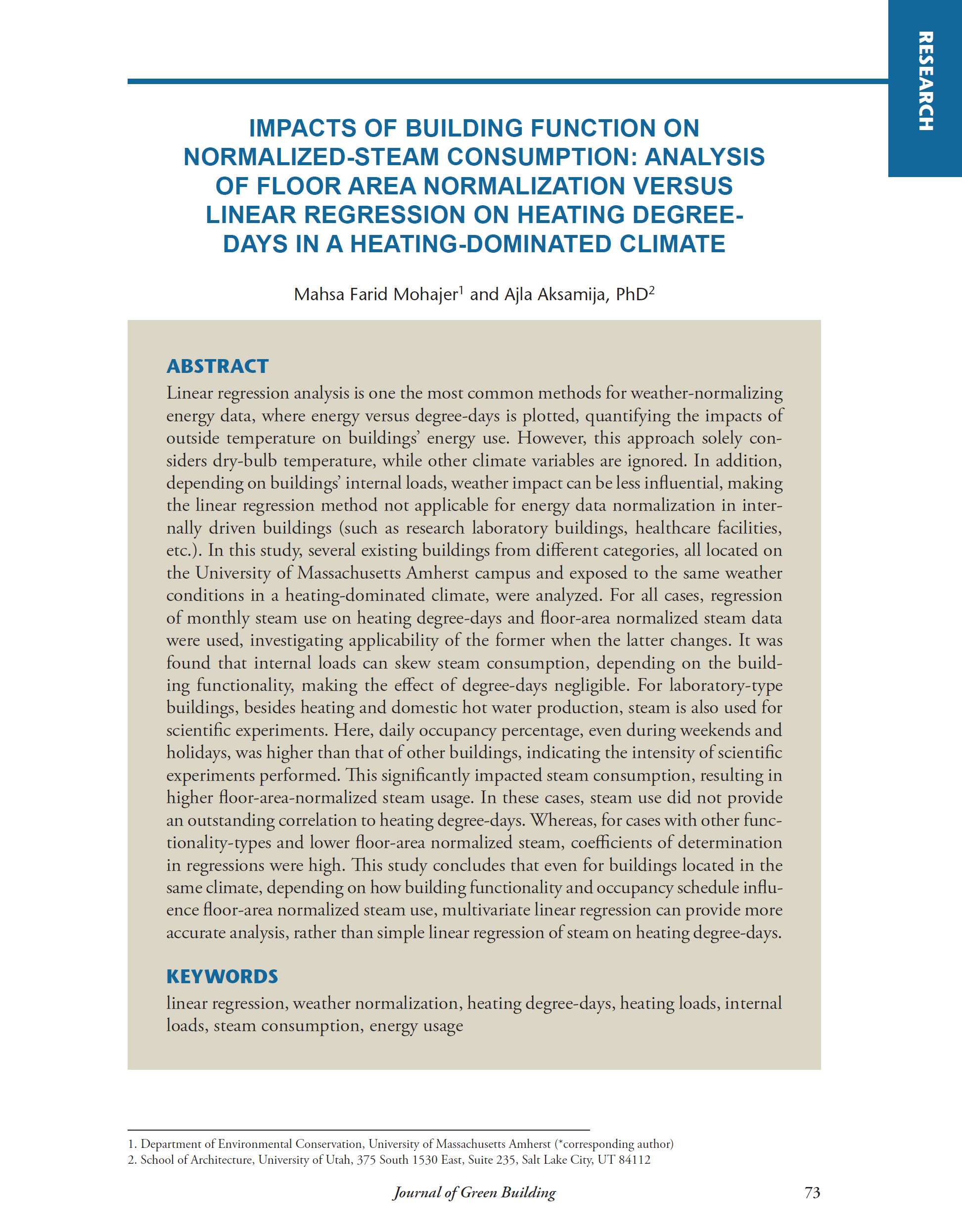
“Impacts of Building Function on Normalized-Steam Consumption: Analysis of Floor Area Normalization vs. Linear Regression on Heating Degree-Days in Heating-Dominated Climate” presents a research study where correlation between monthly steam consumption data and monthly heating degree-days (HDD) was investigated, using several existing buildings as case studies. Linear regression analysis is one the most common methods for weather-normalizing energy data, where energy versus degree-days is plotted, quantifying the impacts of outside temperature on buildings’ energy use. However, this approach solely considers dry-bulb temperature, while other climate variables are ignored. In addition, depending on buildings’ internal loads, weather impact can be less influential, making the linear regression method not applicable for energy data normalization in internally driven buildings (such as research laboratory buildings, healthcare facilities, etc.). In this study, several existing buildings from different categories, all located on the University of Massachusetts Amherst campus and exposed to the same weather conditions in a heating-dominated climate, were analyzed. For all cases, regression of monthly steam use on heating degree-days and floor-area normalized steam data were used, investigating applicability of the former when the latter changes. It was found that internal loads can skew steam consumption, depending on the building functionality, making the effect of degree-days negligible. For laboratory-type buildings, besides heating and domestic hot water production, steam is also used for scientific experiments. Here, daily occupancy percentage, even during weekends and holidays, was higher than that of other buildings, indicating the intensity of scientific experiments performed. This significantly impacted steam consumption, resulting in higher floor-area-normalized steam usage. In these cases, steam use did not provide an outstanding correlation to heating degree-days. Whereas, for cases with other functionality-types and lower floor-area normalized steam, coefficients of determination in regressions were high. This study concludes that even for buildings located in the same climate, depending on how building functionality and occupancy schedule influence floor-area normalized steam use, multivariate linear regression can provide more accurate analysis, rather than simple linear regression of steam on heating degree-days.
Citation:
Farid Mohajer, M., and Aksamija, A., (2021). “Impacts of Building Function on Normalized-Steam Consumption: Analysis of Floor Area Normalization vs. Linear Regression on Heating Degree-Days in Heating-Dominated Climate”, Journal of Green Building, Vol. 16, No. 3, pp. 73-85, DOI: 10.3992/jgb.16.3.73.
